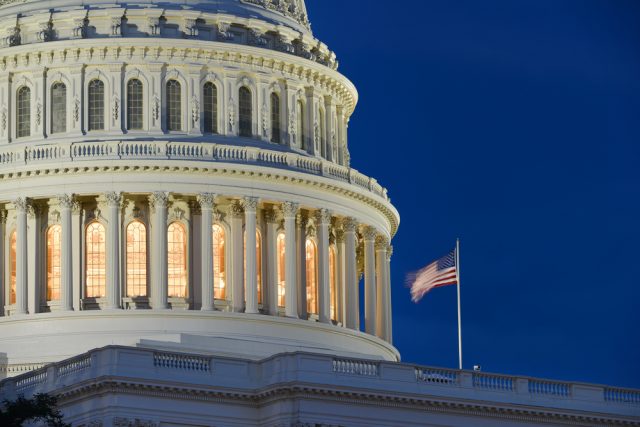 Now that President Donald Trump has named Judge Neil Gorsuch to fill the Supreme Court seat once occupied by the late Antonin Scalia, you may have heard a lot of talk about the so-called “Nuclear Option” and Democratic members of the Senate attempting to “filibuster” the nomination.
Now that President Donald Trump has named Judge Neil Gorsuch to fill the Supreme Court seat once occupied by the late Antonin Scalia, you may have heard a lot of talk about the so-called “Nuclear Option” and Democratic members of the Senate attempting to “filibuster” the nomination.
My colleague Rachel Stockman already penned an article explaining the Nuclear Option, and it’s definitely worth your while to read that article, but here’s some background on the “filibuster” and whether Democrats can even invoke the procedural move to block the Gorsuch nomination.
According to the United States Senate’s own website, the filibuster can be used to block legislative action and became popular during the 1850s. As a little bit of trivia, it derives its name from the Dutch word for “pirate.”
Its use has evolved over time, but the modern usage came about beginning in 1917 when President Woodrow Wilson urged Senators to adopt Rule 22 to end debate by vote of 2/3 majority of the Senate, invoking what a device known as “cloture.” Once cloture was invoked, an up or down vote was held and a simple majority was required to pass a bill. However, the 2/3 majority number became useful to segregationist Senators in blocking Civil Rights legislation. In 1957, Senator Strom Thurmond set a record for filibustering against the 1957 Civil Rights Act for 24 hours and 18 minutes. This led to the Senate, in 1975, to reduce the number of votes for cloture to the present day 60 Senators.
More recently, the public does not see true filibusters in the sense of a Senator standing on the floor for hours on end talking about anything and everything. Instead, the mere threat of a filibuster has prevented votes on legislation and presidential nominees. A party will sometimes threaten to use its power to filibuster as a bargaining chip to get concessions in bills, etc. It has also become commonplace to see the filibuster used to block the appointment of federal judges at the District Court and Appellate Court level. Republicans have done it to Democrats and Democrats to Republicans.
However, beginning in 2011, then-Senate Majority Leader Harry Reid (a Democrat) began changing the Senate rules for filibusters, and it all culminated in 2013 when he got rid of the filibuster so federal nominees — with the exception of Supreme Court justices — could get through hearings with a simple majority of Senators on voting for them, instead of the 60-vote supermajority.
So now that Democrats are not in charge of the Senate or the White House, the question becomes: will Republican Senators, specifically current Majority Leader Mitch McConnell, take the next logical step and remove the filibuster entirely? This would allow all presidential nominations, including Supreme Court picks, to pass the Senate by a simple majority. There would no longer be a need to first vote to end debate and then vote on the matter itself.
Some reports say President Trump is urging McConnell to “go nuclear” if needed to get Gorsuch on the bench.
It remains to be seen what ultimately happens. Perhaps a compromise will be reached among Republican and Democratic Senators up for election in 2018 in states Trump won handily. In that case, all this guessing would be for naught and the filibuster would still remain an option for SCOTUS appointments in years to come.
[image via screengrab]